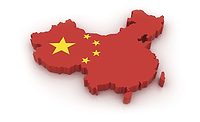GUANGZHOU, China – According to market intelligence firm CCM, the demand for TiO2 is likely to continue rising, as global supply is tight. Asia is seen as the main growth factor, especially countries with growing living standards, which boost the demand for coatings and packaging products. However, increasing prices of Chinese TiO2 are decreasing competitiveness, which opens up an opportunity for exporters to invest in the Asian market.
The year 2016 witnessed a strong rebound of China’s TiO2 business in general, according to CCM. The market situation in 2015 was quite depressed; while in 2016, huge price increases helped the financial performance of China’s manufacturers. The overseas demand for Chinese TiO2 rose by about 17% in 2016, which enabled manufacturers in China to increase their exports.
While international supply of TiO2 remains tight, Asia’s TiO2 market continues the booming trend it has shown since the beginning of 2016. For example, China leads the global demand for TiO2 in the construction sector, with other Asian regions, such as India and Southeast Asia, and the Americans regions of Brazil and Mexico, not far behind.
The three largest exporters of TiO2 in China in 2016 were Sichuan Lomon, Henan Billions, and Gansu CNNC Huayuan. The leading Chinese TiO2 exporter in value and quantity was Sichuan Lomon, followed by Henan Billions and Gansu CNNC Huayuan. However, Sichuan Lomon exported $100 million more of TiO2 than the second-ranked Henan Billions. Henan Billions, on the other hand, exported over $70 million more TiO2 than Gansu CNNC Huayuan.
Weak demand for TiO2 in downstream markets has led to manufacturers slowing down their production, because the margin was not profitable. Hence, the global supply of TiO2 tightened even more during 2016.
China, the most important TiO2 supplier in Asia, has seen especially tight supply, due to environmental inspections and measurement by the government, which forces manufacturers to limit and cut the production in order to ensure environmental protection. Additionally, the price of Chinese TiO2 increased not only because of tight supply, but also due to production costs, which have risen because of higher raw material costs and higher transportation costs.
According to market experts, the global consumption of TiO2 will likely continue to grow until the end of this decade, and the growth in Asia will play a bigger role.
The most important role in future growth is predicted to be with the large manufacturers, as they are able to purchase enterprises in upstream markets and therefore enjoy lower production costs. One example of this trend is seen in the purchase of titanium concentrate processor Panzhihua Ruierxin, which will ensure the supply of ilmenite and other raw materials with tight supply for China’s TiO2.
Players in the TiO2 market believe that the price of TiO2 will continue to rise till early or mid-2018 and then remain on a high level, as demand and supply of TiO2 will balance out. Rising living standards in Asian countries like China are causing the demand for coatings and packaging, driving up demand for TiO2. Hence, Asia will be the most important market in the near future.
Demand has remained steady during the first quarter of 2017, due to some pre-buying before the peak season ahead. Additionally, there are some signs that the activity from downstream industries like paints and coatings, as well as plastics, is increasing seasonally in the second quarter, which will mean even more pressure on the tight supply situation.
Chinese and Asian manufacturers are not the only players to increase prices of TiO2. Many big players have announced prices rises in 2017, and that is likely to continue throughout the year and into 2018. The big western players in the TiO2 business, namely Chemours, Huntsman and Cristal Global, have increased their prices for TiO2 as of March 1. Several China’s TiO2 manufacturers, among them the newly merged Lomon Billions, increased price quotes at the end of February.





Report Abusive Comment